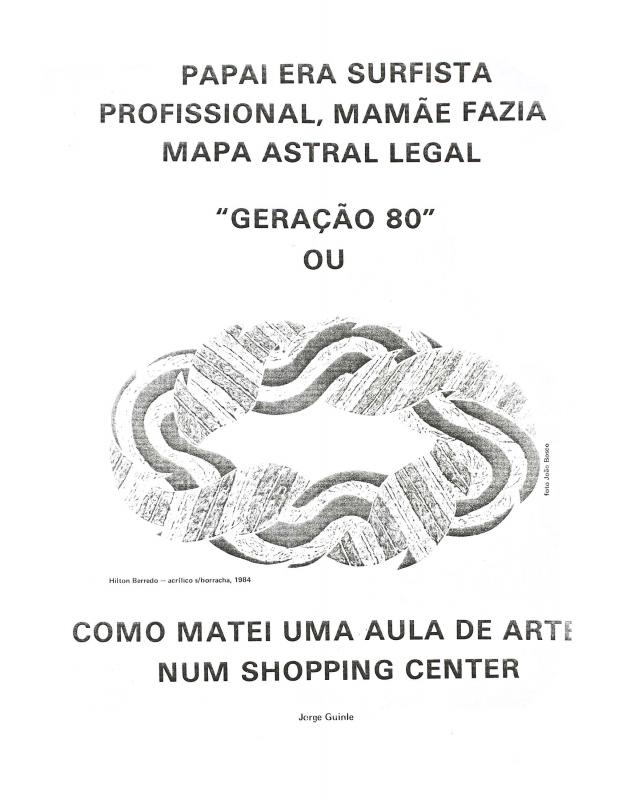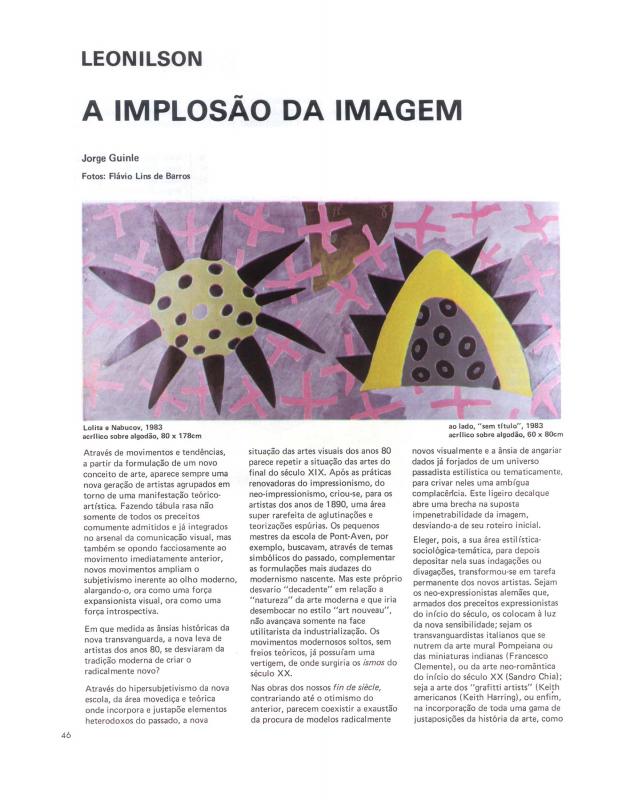The painter and art critic Jorge [Eduardo] Guinle Filho (1947–87) was one of the main members of the “Geração 80”—a generation of Brazilian artists whose core movement was “the return to painting,” inspired by both the Italian transavantgarde and German Neoexpressionism. He made a name for himself with his painting and his intellectual contribution as an art critic.
In this article, Guinle writes about the work of his fellow painter Victor Arruda (b. 1947). In Guinle’s opinion, his colleague’s paintings reveal an intentional “poverty” in terms of both materials and technique that is only equaled by the banal (and offensive) iconography of his paintings: two examples of cultural shock that distinguish his work. Guinle describes certain icons that Arruda explores and transforms into fetishes, despite the fact that they also apply to typical traits in Brazilian society. Arruda’s critical relationship with the modernist avant-garde can be seen in his paintings, expressed with all the intensity of suburban kitsch. In discussing the painter’s technique, Guinle mentions the preoccupation with poor materials in his work.
[As complementary reading, see the following articles by the author in the ICAA digital archive: O conceito de imagem na nova pintura do século XX” (doc. no. 1110968); “Expressionismo vs. Neo-expressionismo” (doc. no. 1110955); “A pintura contra a parede” (doc. no. 1110935); and “Papai era surfista profissional, mamãe fazia mapa astral legal: ‘Geração 80’ ou como matei uma aula de arte num shopping center” (doc. no. 1110971). See also an article about another artist of his generation: “Leonilson: a implosão da imagem” (doc. no. 1110504)].





